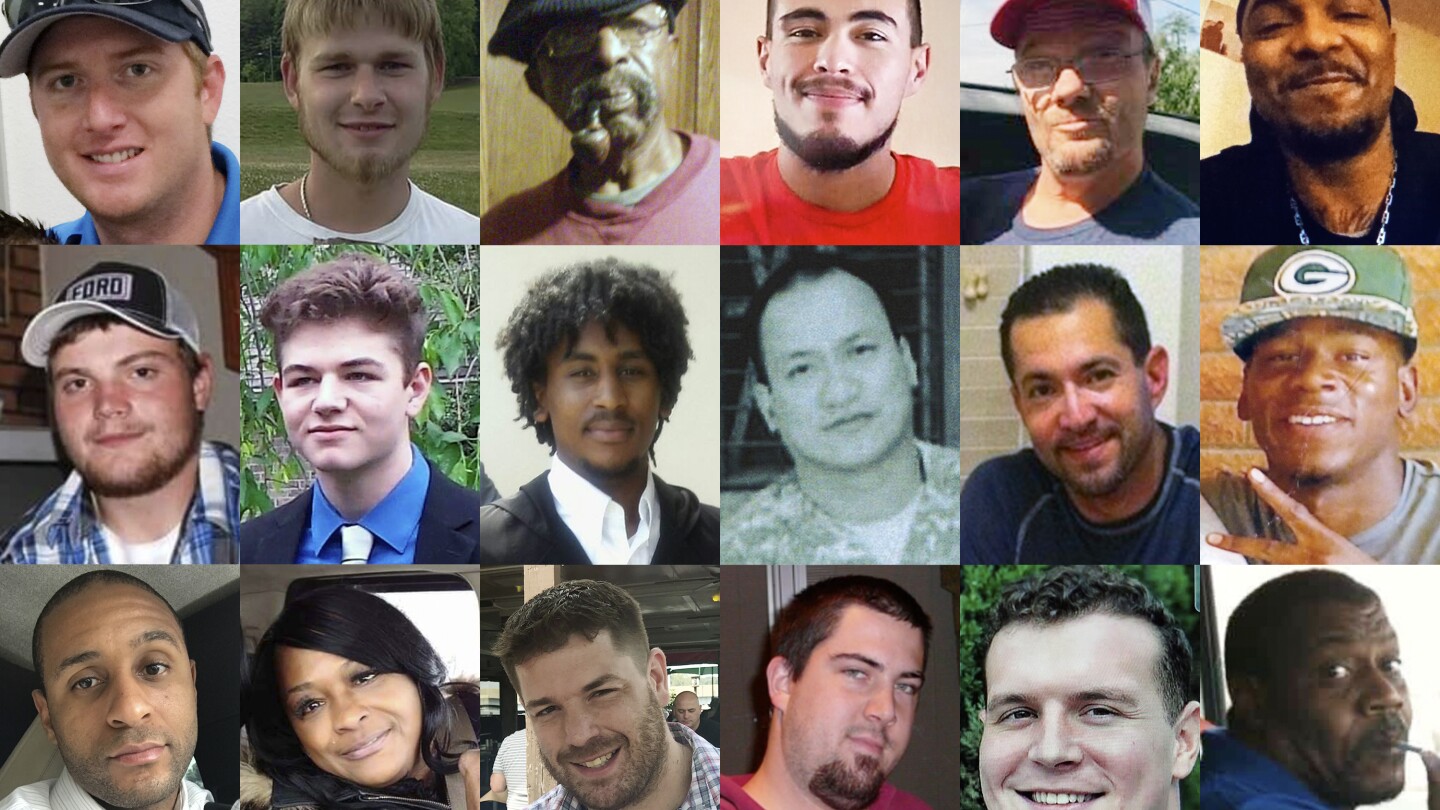Carl Grant, a Vietnam veteran with dementia, wandered out of a hospital room to charge a cellphone he imagined he had. When he wouldn’t sit still, the police officer escorting Grant body-slammed him, ricocheting the patient’s head off the floor.
Taylor Ware, a former Marine and aspiring college student, walked the grassy grounds of an interstate rest stop trying to shake the voices in his head. After Ware ran from an officer, he was attacked by a police dog, jolted by a stun gun, pinned on the ground and injected with a sedative.
And Donald Ivy Jr., a former three-sport athlete, left an ATM alone one night when officers sized him up as suspicious and tried to detain him. Ivy took off, and police tackled and shocked him with a stun gun, belted him with batons and held him facedown.
Each man was unarmed. Each was not a threat to public safety. And despite that, each died after police used a kind of force that is not supposed to be deadly — and can be much easier to hide than the blast of an officer’s gun.
Every day, police rely on common tactics that, unlike guns, are meant to stop people without killing them, such as physical holds, Tasers and body blows. But when misused, these tactics can still end in death — as happened with George Floyd in 2020, sparking a national reckoning over policing. And while that encounter was caught on video, capturing Floyd’s last words of “I can’t breathe,” many others throughout the United States have escaped notice.



The internet has given us the unique experience of “playing with” mentally ill people like archlinuxforever, what a time to be alive.
Born too late to sail the seas, born too early to sail the stars, born just in time to surf troll back hair.